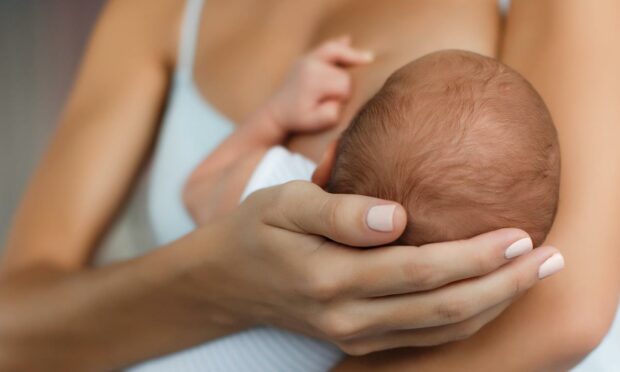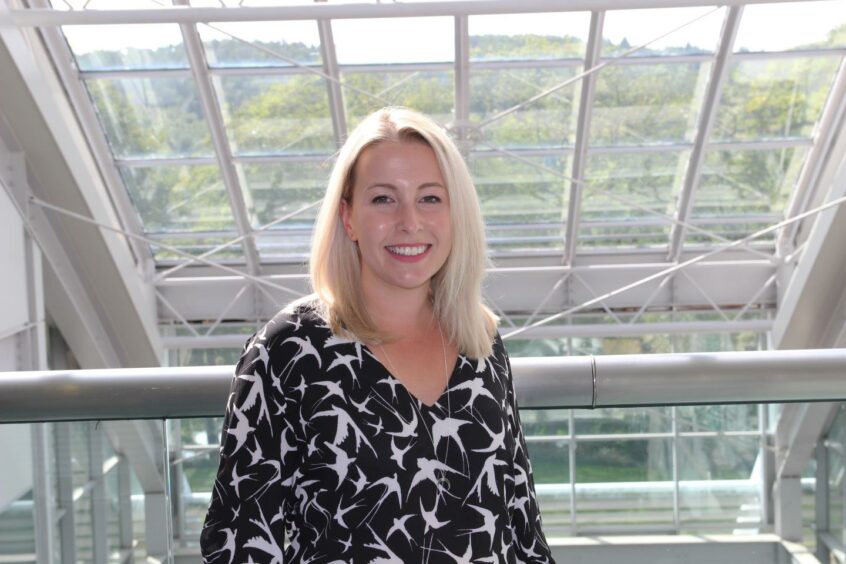It’s not unusual for expecting mothers to hear the phrase “breast is best” during their pregnancies, but is that really the case?
Often women will feel shamed no matter their decision on breastfeeding their baby.
Studies have shown non-breastfeeding mothers reported feelings of guilty and blame, while women who opted to breastfeed felt humiliation and fear when feeding in public.
Midwifery expert Fiona Gibb says decisions around feeding plans should be based on information – and not on hearsay.
Mrs Gibb, Robert Gordon University’s lead midwife for education, is passionate about teaching the future of midwives to be “advocates for women”, and respecting the choices they make as there is no “one right path” for all.
‘It’s normal to give human milk to human babies’
RGU has become the first university in Scotland to be given accreditation by Unicef for its approach to teaching students the best ways to offer breastfeeding support, infant nutrition and forming close relationships.
Mrs Gibb said we need to think about breastfeeding as normal – and a choice – and not necessarily a slogan like “breast is best”.
She added: “We have the Breastfeeding Act 2005 In Scotland, and we want to normalise breastfeeding and that it’s very safe to breastfeed your baby in a public place.
“It’s illegal for a woman to feel unwelcome and to be moved on from an area for feeding their babies.
“We want to normalise it by saying: ‘As a human species it is normal to give a human baby human milk’.
“But ultimately, it’s your choice about whether you choose to do so.”
The benefits of infant feeding
Overall, research has found babies and mothers do benefit from breastfeeding.
For youngsters it can reduce the risk of infections, allergies, Sudden Infant Death Syndrome, insulin-dependent diabetes, childhood leukaemia.
And for mothers, it can lower the risk of breast and ovarian cancer.
Mrs Gibb said some of these could be long-lasting benefits that can go well into adulthood.
“We’ve got lots and lots of research that we know has lots of benefits,” she said.
“It’s important to remember that human milk is a living fluid.
“There’s a misconception that formula milk is just as good as breast milk without realising that there are so many living ingredients in human milk that make these benefits possible.
“There’s lots of hormones, there’s enzymes, there’s antibodies.
“So, that protection for the baby we know is a great benefit. And aside from that, the bonding that it can come from that mother and baby attachment, particularly in those early days.”
Important to respect all feeding decisions
Many women and families decide to forego breastfeeding for a multitude of reasons – and Mrs Gibb says it’s up to healthcare professionals to ensure these choices are recognised and respected.
“It’s not the role of the healthcare professional, to steer or put pressure on parents any which way,” she said.
It is important to ensure conversations about breastfeeding are non-judgement, she said, as even something like the language used could make a parent feel they are being swayed.
She added: “For example, if a woman chooses to bottle feed her baby, then it’s important that she goes home knowing how to do that properly and safely.
“In terms of how equipment is sterilised or how to make up a formula feed.”
And she emphasised the importance of women having the opportunity throughout their pregnancy, and early into the postnatal period, to discuss their options.
This way they will be making an informed decision and not on hearsay from what they may be picking up from different sources.
Mothers shouldn’t feel “pushed” into a choice
“There’s lots of influence – whether it’s from the media, friends, peers,” said Mrs Gibb.
“We try to ensure that the education we’re providing to our students is very much about being factual about what the evidence says.
“There is lots of evidence that will maybe support one way of thinking, there’s maybe evidence that might support another option, and that’s not to say that there’s one right path for all women.”
Healthcare professionals want to “move away” from the perception that mothers feel “pushed down” to one decision or another.
“And that’s very much not the case, and that’s certainly not the education that we are providing to students becoming healthcare professionals,” she added.
“We are here to be non-judgmental, we’re here to be advocates for women and supporting them in their choices that’s based on factual information.”
More health news…
Why eating fat in our diets lowers our risk of heart disease
Number of women going for smear tests drops to lowest level in five years
Man-flu: Is it made-up, or does it give them an ‘evolutionary advantage’?



